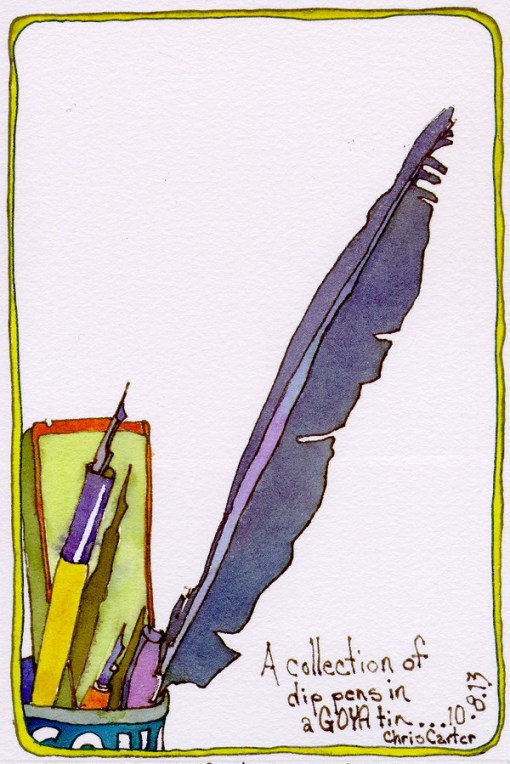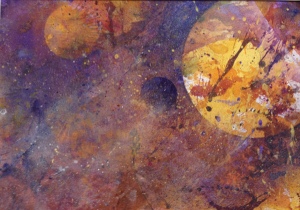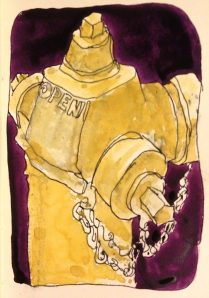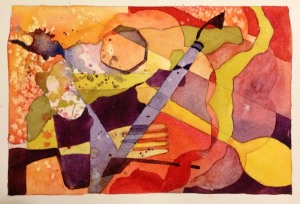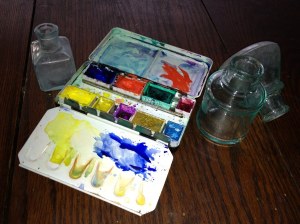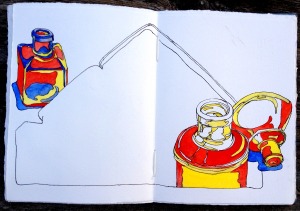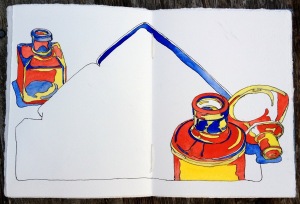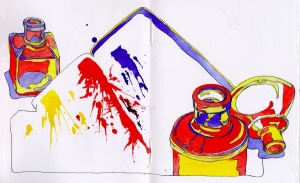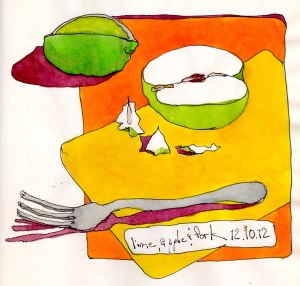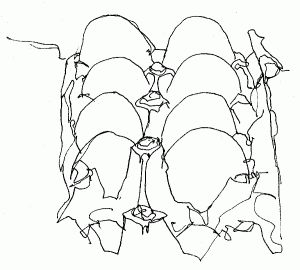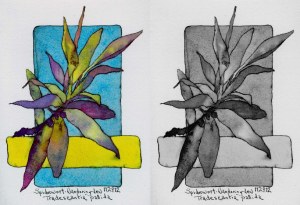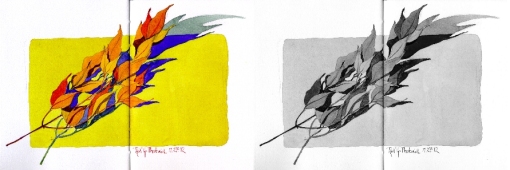(1. ) Matted, framed and dropped off paintings for solo exhibit at Connexions Gallery in Easton, PA …. done (2.) Picked up paintings from exhibit in Brooklyn … one sold! …. done (3.) Figure out how to film, edit and post short art videos for my students …. still a long way to go to get better, but done. The list goes on. Fortunately, all but a few items on the current Art Business list are checked off. Today the list will grow again, but last night I felt the pressure was off. I laugh when people envy my life as an artist thinking that I have all the time in the world to do exactly what I want to do. My life as an artist definitely is enviable, but not for that reason.

Pete’s Angel playing to a lame audience
What might be envied is the joy of curling up in a comfy chair, a warm breeze crossing the room, the sound of gentle rain with an occasional flash of lightning, fountain pen in hand, drawing two of my constant companions, the little garden angel given to me by my friend, Pete, and my skeleton, Henry. They keep each other company beside the fireplace in the living room.
Why post this random though on Creative Color? Because I am still exploring the beauty of the neutrals I can achieve with that ugly pigment, Cadmium Red Deep! I began my intense study of color three, almost four years ago so that I could bring more full intensity, highly saturated color into my paintings. That mission has been accomplished and I am enjoying full intensity hues more than I imagined possible. Now I am going deeper into the world of beautiful color and playing with neutrals. Without realizing it, most of my daily sketchbook paintings, though rich in color and value, do not use any of the three pigments in full intensity. All of the colors applied to the drawing are mixes of all three primary pigments in my limited palette of raw sienna, cadmium red deep and ultramarine blue. This is my third week exploring this palette and I like it more each day. Though I’m excited about whatever my next three primaries might be, I can’t seem to leave this palette behind.
Image: Drawn first in ink with fountain pen, followed by watercolor.
For those of you who live within driving distance of Santa Rosa, California …. I will be teaching workshops at both Village Art Supply (April 25th & 26th) and Riley Street Art Supply (April 27th & 28th) Please contact me if you would like more info!
Link to short art videos: Vimeo.com/ChrisCarterArt/
Link to Website Blog: ChrisCarterArt.com/blog/
